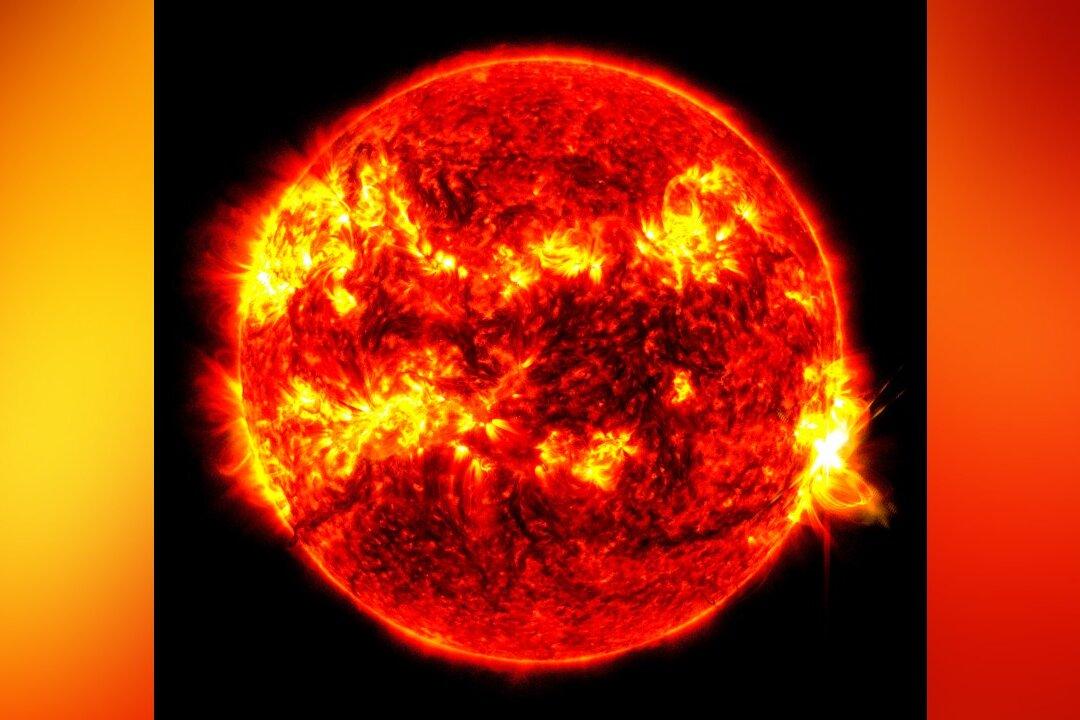The sun emitted a powerful solar flare on Oct. 3, according to NASA, prompting the Space Weather Prediction Center to issue a Geomagnetic Storm Watch due to the forecasted arrival of coronal mass ejections.
NASA stated that its Solar Dynamics Observatory, which constantly monitors the sun, captured the flare on Thursday morning. This was the second intense flare this year and the most powerful since 2017.





